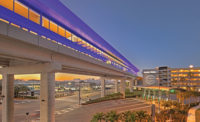Despite a still shaky economic recovery, construction and design firm executives are cautiously optimistic thanks to surging worldwide demand for infrastructure upgrades, especially in the energy sector, says management consultant KPMG International in its 2013 global construction survey released on Oct. 8. Survey results are based on early-year responses from 165 industry CEOs and top executives in 29 countries, about 16% in North America.
The power sector "without question" is attracting the most attention from industry executives, says Geno Armstrong, global leader of KPMG's engineering and construction practice. He noted the need for infrastructure to support the extraction, transport and generation of traditional and sustainable energy sources. The survey notes that 66% of respondents expect national governmental infrastructure plans to drive future market growth. But their optimism is tempered by the current economic climate. About 72% of execs say budget deficits and public funding remain the greatest barriers to growth. Respondents also do not expect public-private partnerships to fill the gap, with only 28% seeing private-sector infrastructure funding as an "important driver" of future projects.
Even so, the survey found industry executives increasingly upbeat, with 54% reporting an increase in company backlogs. While respondents admit margins are rising much slower than backlogs, 80% say conditions were stable or improved from 2012 to 2013. At the same time, while 67% of respondents say their own firm's revenue could grow by up to 25% during 2013, three-quarters of them anticipate it would take from two to five years to see a "real industry upswing."
Despite the improving conditions, respondents see plenty of risk ahead. While 79% think their investments in risk management have paid off, 77% report experiencing underperforming projects, due mostly to delays, poor estimating processes, failed risk-management processes and inadequate subcontractor performance, respondents tell KPMG.
Executives are "bullish, but also wary that tight cost pressures provide little margin for error," Armstrong points out, adding that industry needs to ensure it "receives full value for its substantial investment in risk."




Post a comment to this article
Report Abusive Comment